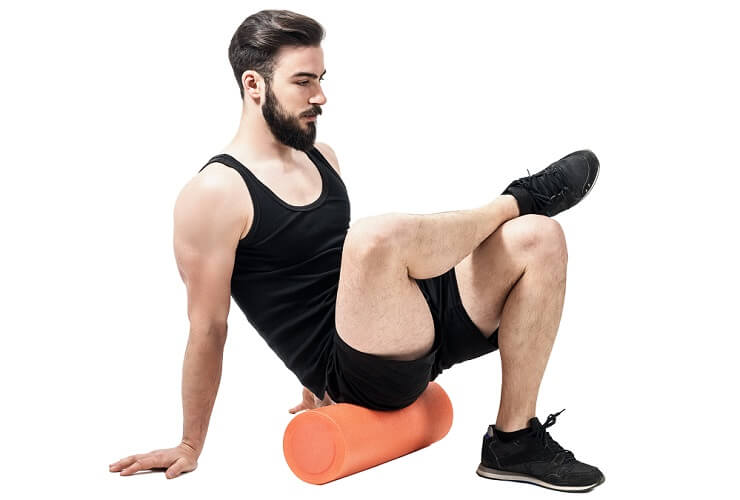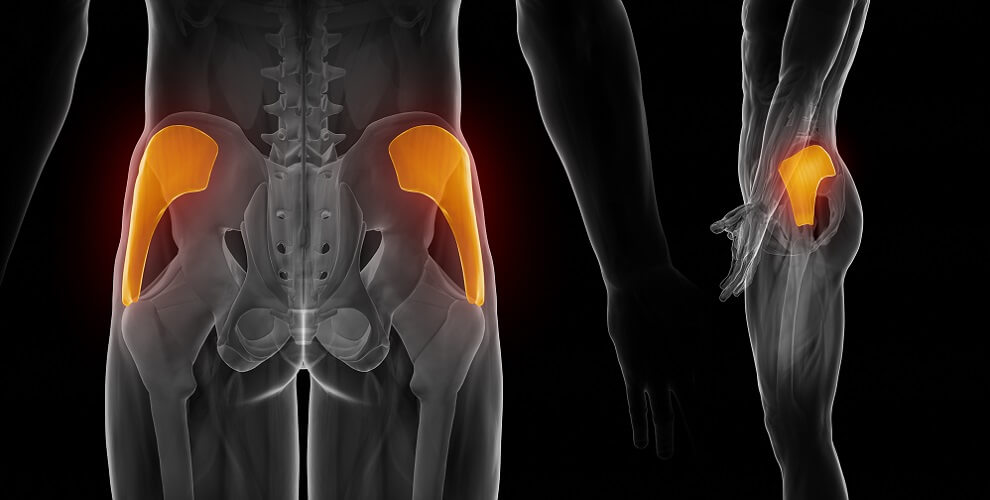Definition
The gluteus medius is one of four superficial gluteal muscles that allow a broad range of movement in the hip joint. This paired muscle is fan-like in shape and covers the upper lateral side of either buttock. It is partially covered by the gluteus maximus. As a prime mover of hip joint abduction and an integral muscle for pelvic stability, a gluteus medius tear can cause long-term changes in gait and balance.
Gluteus Medius Location
When studying gluteus medius location and function it is best to look at it within the superficial gluteal muscles group. These muscles form the shape of the buttocks:
- Gluteus maximus
- Gluteus medius
- Gluteus minimus
- Tensor fasciae latae
All four muscles begin at the ilium and/or sacrum of the pelvis. The gluteus maximus, medius, and minimus are often collectively referred to as the ‘glutes’.
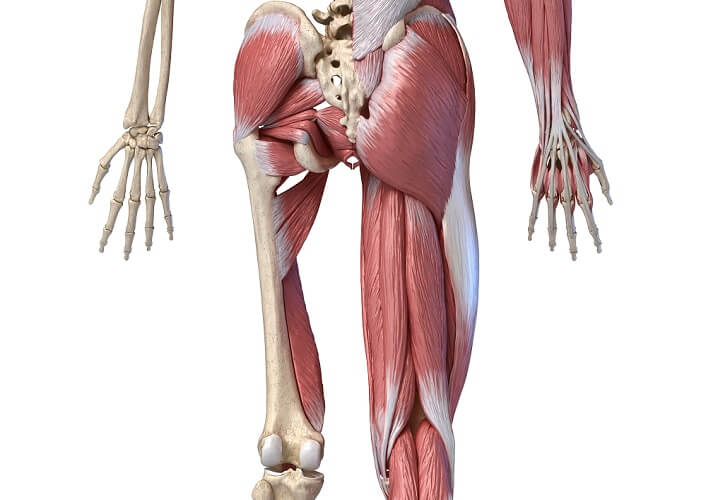
From this point, they spread over the sides of the hips and the buttocks before attaching to grooves in the femur bone. The tensor fasciae latae contributes to mild abduction and rotation at the thigh but primarily serves to extend and rotate the leg at the knee. It inserts at the tibia (shin bone).
As the name suggests, the gluteus maximus is the largest of the three gluteal muscles. It is also the most superficial.
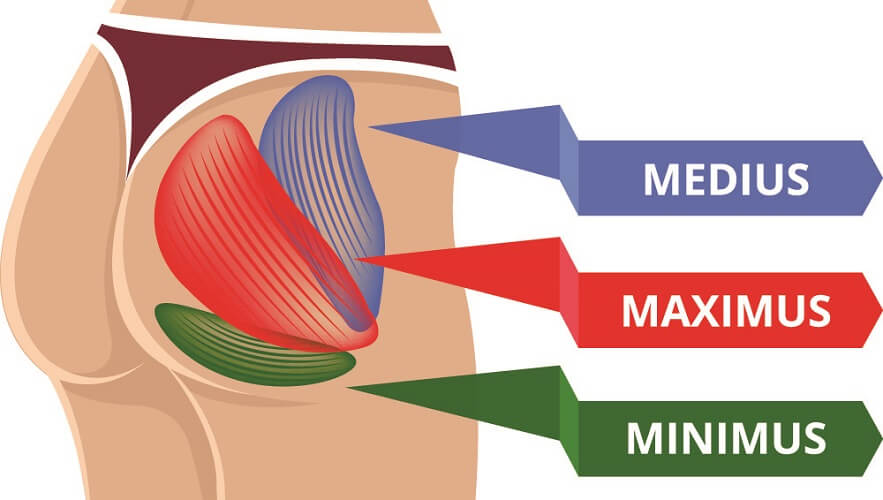
The gluteus minimus – the smallest of the three superficial gluteal muscles – is triangular in shape and the deepest.
The gluteus medius is found in the posterior hip – the back of the thigh. It is the correct site – the dorsogluteal site – for intramuscular injections in the buttock area. Nurses and doctors locate the correct site by dividing the left or right buttock into four quarters. The upper outer quarter is topped by the curve of the ilium bone and the intramuscular injection is administered below this point.
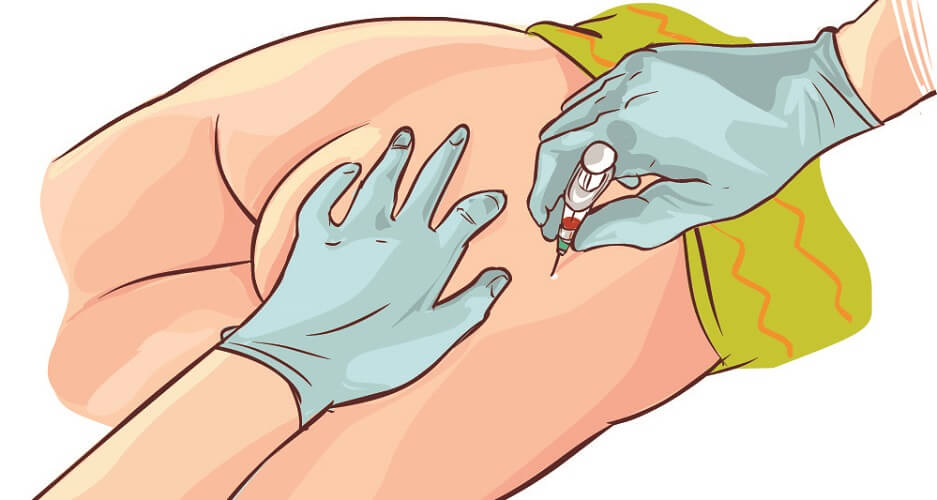
In anatomical terms, the gluteus medius is located on the lateral upper buttock and below the iliac crest.
Gluteus Medius Function
The primary gluteus medius action is to abduct the hip joint. Abduction – in this particular case – is acetabulofemoral joint movement that brings the leg away from the midline of the body.

The anterior portion of this muscle (the top portion) helps to flex and medially rotate the hip. It has a much lesser role in flexion than it does in rotation. Medial rotation turns the hip inwards and is also referred to as internal rotation (see image below). Flexion occurs when we bring the hip forward – a movement we make whenever we take a step forward.
The posterior portion of this gluteal muscle (the bottom portion) is covered by the gluteus maximus. Here, the medius muscle helps with external (lateral) hip rotation away from the midline.
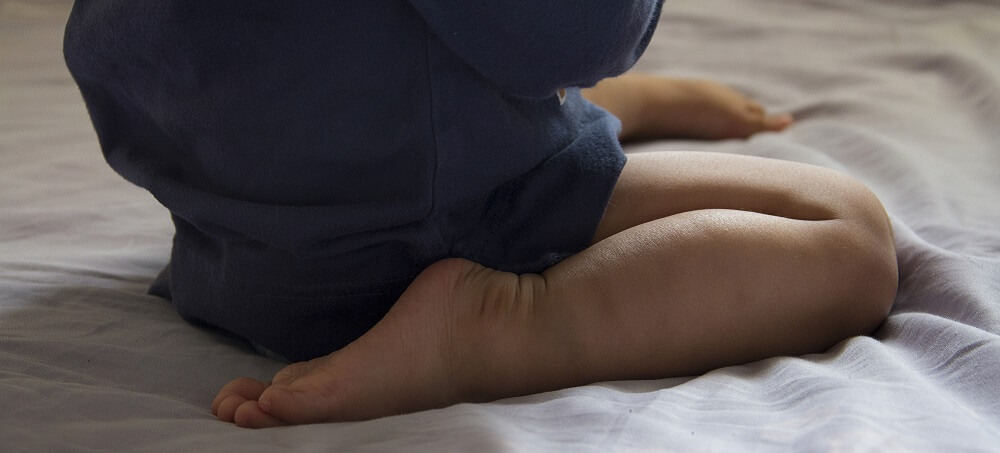
Another important gluteus medius function is maintenance of pelvic stability. Many runners suffer from frontal plane dysfunction where a chain of muscles that flow from the lower abdomen to the lower legs lacks stability. If you are a runner, ask someone to test your frontal plane. Stand with your feet shoulder-width apart and your arms hanging by your side. Let the person stand at your side, take one wrist, and pull your arm down. You should try to resist this force and remain upright. If you have frontal plane dysfunction, one side of your body will be significantly weaker than the other. This weakness has much to do with the gluteus medius muscle.
Pelvic stability is important for both hips. When we run, walk or bear weight on one limb the medius muscle stops the non-weight bearing hip from dropping. To maintain pelvic stability and increase range of motion in the hip in terms of abduction and rotation, it is recommended to include gluteus medius exercises in your workout routine.
If you spend long hours at a desk, taking breaks and using this time to stretch the muscles of the lower abdomen, hips and thighs will strengthen them over a relatively short period.
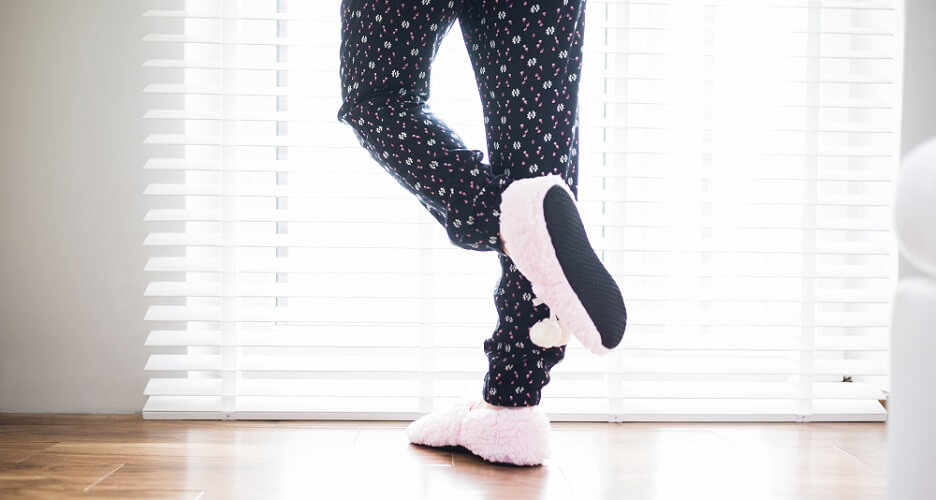
Gluteus Medius Antagonists
Muscles work as groups. When one contracts, others relax. An agonist muscle is a muscle that is responsible for the direction of movement and is most commonly the muscle that contracts. The main agonist is also referred to as the prime mover. Lesser agonists are called synergists and assist prime mover motion. They can also stabilize the prime mover in the form of fixator muscles. Antagonist muscles relax during this movement and contract when the associated part of the anatomy returns to resting position.
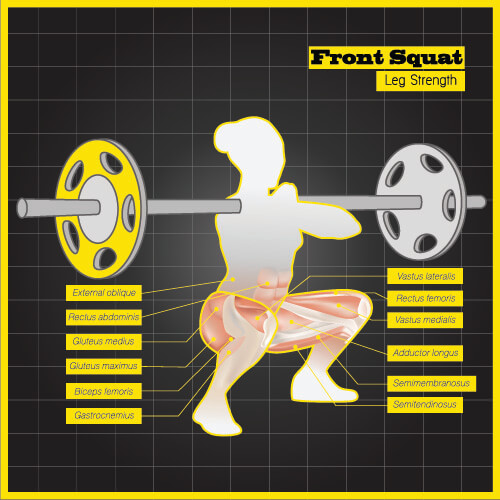
The gluteus medius plays the role of prime mover together with the gluteus minimus in hip abduction and internal rotation. For external hip rotation, it is a synergist that increases pelvic stability. It provides an antagonist function when the adductor muscles bring the leg back to the midline after hip abduction and in hip flexion.
The below table shows where this muscle has the most influence.
|
Motion |
Role |
|
Hip Abduction |
Prime Mover |
|
Hip Extension |
Synergist |
|
Hip Internal Rotation |
Prime Mover |
|
Hip External Rotation |
Synergist |
Gluteus Medius Origin and Insertion
Gluteus medius origin is at the lateral surface of the ilium. More specifically, it originates between the posterior gluteal line, the anterior gluteal line, and the gluteal aponeurosis. An aponeurosis is a sheet of connective tissue that stabilizes a muscle when it contracts.
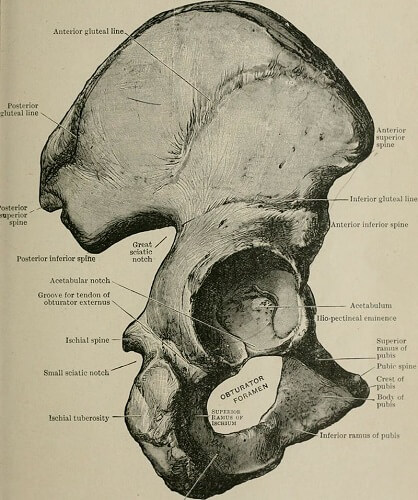
Gluteus medius insertion is at the posterior and lateral sides of the femur – specifically the greater trochanter.
Three groups of muscle fibers allow medius muscle contraction and pass forward, backward, and downward from the point of origin. They meet close to the greater trochanter and form a tendon.

Gluteus Medius Pain
Gluteus medius pain can be caused by a range of movements and external factors:
- Constantly leaning to one side when standing
- Sitting with crossed legs for long periods
- Sleeping sideways with no support between the two legs
- Nerve and brain disorders that cause gluteus medius weakness
- Overly tight hip adductor muscles that work against the abductor muscles
When pain is felt over the upper side of the hip and this pain becomes worse when running, sitting for long periods, and activities such as climbing stairs, it may be the result of a gluteus medius tear. This is actually a tear in the tendon that attaches this muscle to the greater trochanter.

A feeling of numbness in the area of the middle gluteal muscle is usually the result of gluteus medius tendinopathy. A layman’s term for this diagnosis is dead butt syndrome (DBS). Yet another name is gluteus medius syndrome. Although the skin above the inflamed area seems to have less sensation, gluteus medius pain is present. This pain often radiates down the thigh and can be confused with sciatica.
Treatment for any gluteus medius strain is rest, ice pack application, and perhaps non-steroidal anti-inflammatory medication. In some cases, injection into the hip joint with cortisone is recommended. Should the associated tendon tear, surgery is rarely required and the same treatment applies; however, a brace can help to stabilize a weak acetabulofemoral joint.

After a period of rest, regularly implementing a gluteus medius stretch regime in combination with exercises of the surrounding hip and abdominal muscles will strengthen the area and prevent future damage. A good gluteus medius workout incorporates stretches that mimic its actions as agonist, synergist, and antagonist.
